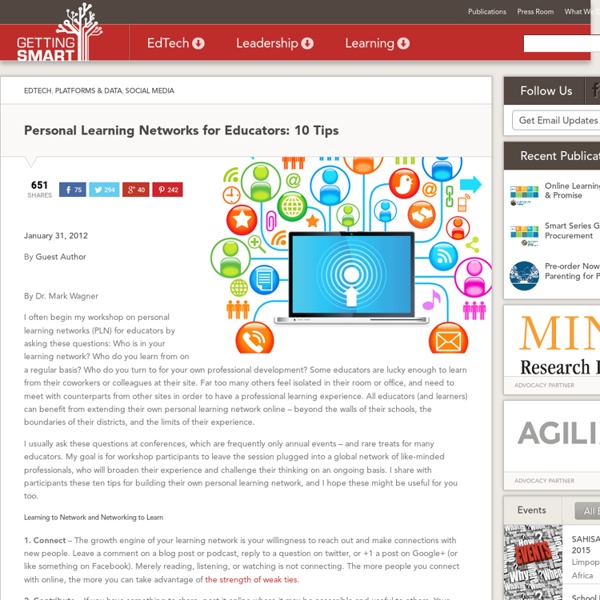Zoom
Trash
Related:



3 Steps for Building a Professional Learning Network - Education Week Teacher Published Online: December 31, 2014 —Photo by Sean Chaffey, via Flickr Creative Commons By Brianna Crowley Recently, a colleague asked me, “What is a PLN?” She was taking a graduate course on technology implementation and was required to form a “PLN” using digital communities and tools. Her question prompted me to articulate how I define a professional learning network (PLN) and how I have shaped my own. A professional learning network is a vibrant, ever-changing group of connections to which teachers go to both share and learn. Teachers build PLNs the same way they build any network: by investing time to find and connect with people they trust, who have shared interests and passions. Although technology is often the vehicle to build connections, a PLN is about relationships. Let’s explore how to develop each of these layers of relationships and understand their role in professional learning. Step One: Find the Professionals Imagine you were moving to a new city. Feeling Overwhelmed? Web Only
How to Create a Robust and Meaningful Personal Learning Network [PLN] This post describes how educators can develop a personal learning network that supports meaningful and relevant learning. The MOOC, Education Technology & Media, etmooc, is used here as a working example of how to develop a PLN. “My Personal Learning Network is the key to keeping me up-to-date with all the changes that are happening in education and how technology can best support and engage today’s students.” Brian Metcalfe: teacher, blogger at lifelonglearners.com I wrote a post recently about how to develop a personal learning environment [PLE], the need and benefits of doing so, for educators in particular. What is a PLN? PLN versus PLE The personal learning network can be a rich source of learning that fosters connections that become part of our professional development as the quotation at the beginning of the post from Metcalfe describes. In the etmooc we are primarily using Google+ Community , Blackboard Collaborate and Twitter to interact. Resources Like this: Like Loading...